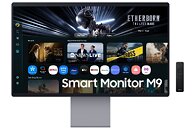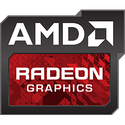New Monster Hunter Wilds Patch Lands To Address PC Performance Issues
Monster Hunter Wilds players on PC have recently had a bit of a rough time of things when it comes to performance, with the game's recent Steam reviews seeing a number of players complaining about random stutters, FPS drops, and a general lack of optimization. Even gamers playing on relatively high-end recent GPUs, like the AMD Radeon RX 7900 XT report that their experience has been tainted by poor performance, even if the actual game content is good. With the latest Monster Hunter Wilds patch, though, Capcom is attempting to address those performance issues—and the resulting slew of negative reviews—as announced today in a post on X.
While there are new monsters, weapons, cosmetics, equipment, and other in-game content, the majority of the focus of the 1.020.00.00 update (full notes here) is on those performance updates. Capcom has changed the way shader compilation works, now making the CPU-intensive task take place the first time you run the game after an update as well updated a slew of upscaler and frame generation changes, primarily adding DLSS 4 and FSR 4 support for GPUs newer than the GeForce RTX 2000 series and AMD Radeon RX 9000 series. The new fix also allows players to mix upscaling and frame generation methods, which should allow players to better tune the game's visuals and performance. Additional fixes to the game include reduced VRAM usage from texture streaming and a more accurate calculation of estimated VRAM consumption. Steam users also now get a notification upon launching Monster Hunter Wilds if they are running an unsupported operating system or out-of-date GPU drivers, or if they are running the game in compatibility mode.
While there are new monsters, weapons, cosmetics, equipment, and other in-game content, the majority of the focus of the 1.020.00.00 update (full notes here) is on those performance updates. Capcom has changed the way shader compilation works, now making the CPU-intensive task take place the first time you run the game after an update as well updated a slew of upscaler and frame generation changes, primarily adding DLSS 4 and FSR 4 support for GPUs newer than the GeForce RTX 2000 series and AMD Radeon RX 9000 series. The new fix also allows players to mix upscaling and frame generation methods, which should allow players to better tune the game's visuals and performance. Additional fixes to the game include reduced VRAM usage from texture streaming and a more accurate calculation of estimated VRAM consumption. Steam users also now get a notification upon launching Monster Hunter Wilds if they are running an unsupported operating system or out-of-date GPU drivers, or if they are running the game in compatibility mode.








































































